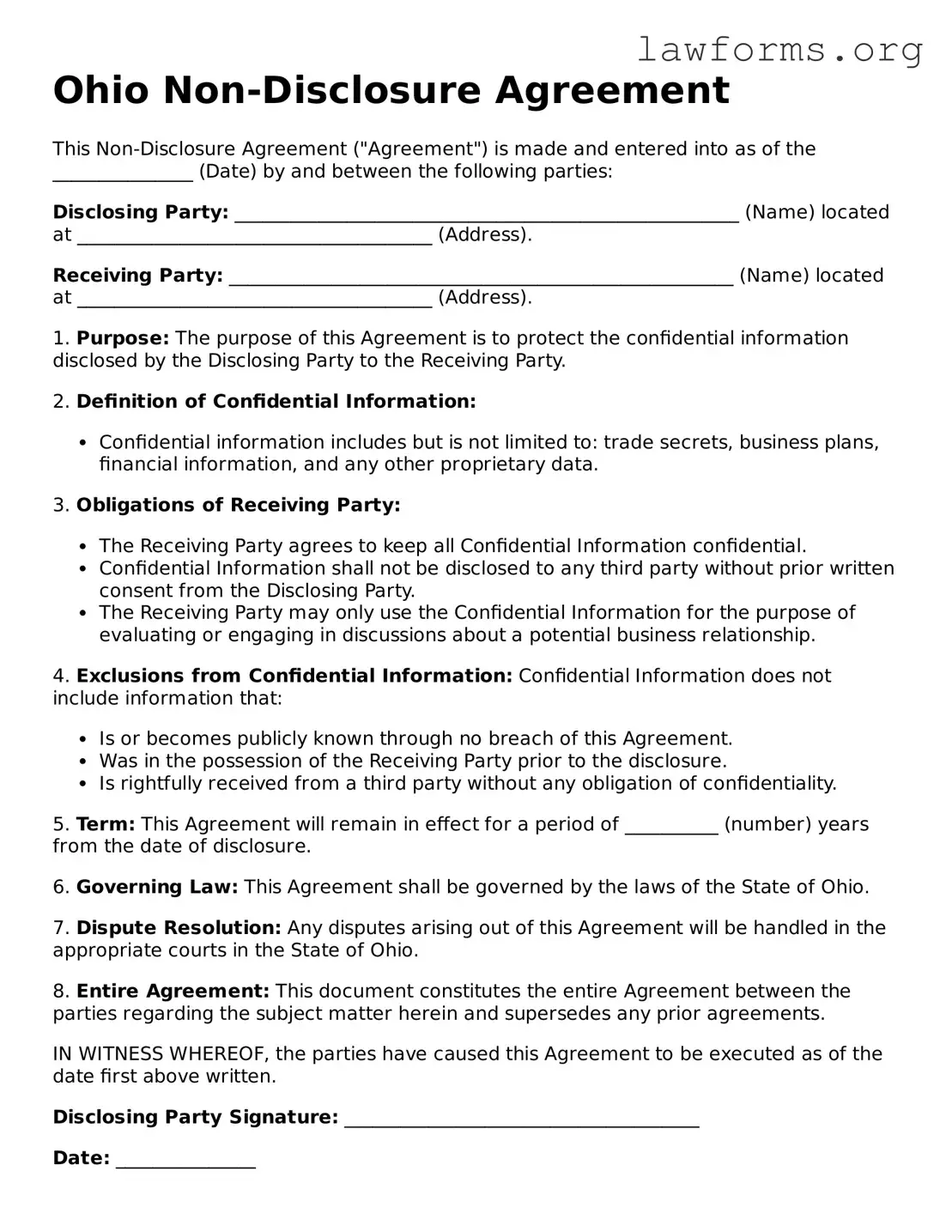Ohio Non-Disclosure Agreement
This Non-Disclosure Agreement ("Agreement") is made and entered into as of the _______________ (Date) by and between the following parties:
Disclosing Party: ______________________________________________________ (Name) located at ______________________________________ (Address).
Receiving Party: ______________________________________________________ (Name) located at ______________________________________ (Address).
1. Purpose: The purpose of this Agreement is to protect the confidential information disclosed by the Disclosing Party to the Receiving Party.
2. Definition of Confidential Information:
- Confidential information includes but is not limited to: trade secrets, business plans, financial information, and any other proprietary data.
3. Obligations of Receiving Party:
- The Receiving Party agrees to keep all Confidential Information confidential.
- Confidential Information shall not be disclosed to any third party without prior written consent from the Disclosing Party.
- The Receiving Party may only use the Confidential Information for the purpose of evaluating or engaging in discussions about a potential business relationship.
4. Exclusions from Confidential Information: Confidential Information does not include information that:
- Is or becomes publicly known through no breach of this Agreement.
- Was in the possession of the Receiving Party prior to the disclosure.
- Is rightfully received from a third party without any obligation of confidentiality.
5. Term: This Agreement will remain in effect for a period of __________ (number) years from the date of disclosure.
6. Governing Law: This Agreement shall be governed by the laws of the State of Ohio.
7. Dispute Resolution: Any disputes arising out of this Agreement will be handled in the appropriate courts in the State of Ohio.
8. Entire Agreement: This document constitutes the entire Agreement between the parties regarding the subject matter herein and supersedes any prior agreements.
IN WITNESS WHEREOF, the parties have caused this Agreement to be executed as of the date first above written.
Disclosing Party Signature: ______________________________________
Date: _______________
Receiving Party Signature: ______________________________________
Date: _______________
